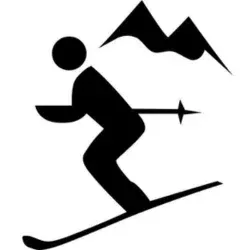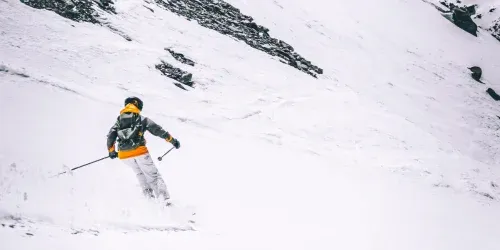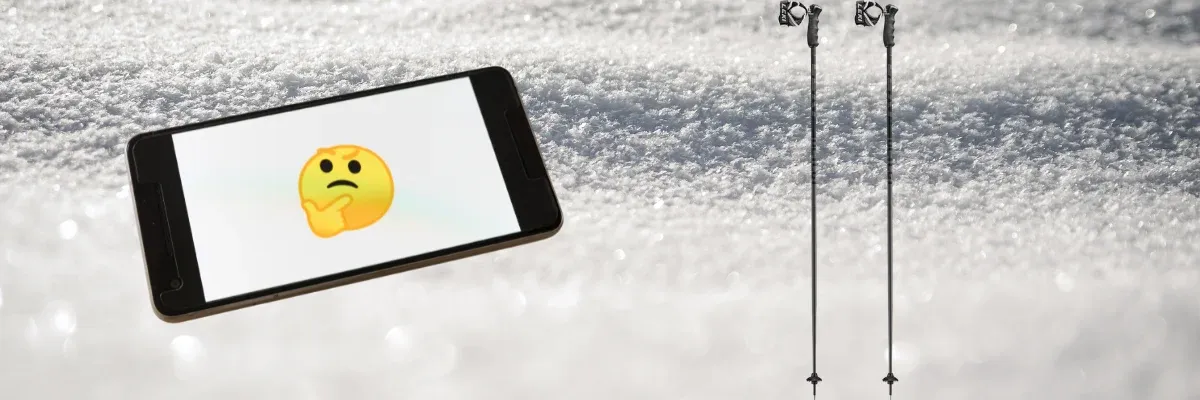Key Takeaways:
- Ski poles aid in balance, timing, and rhythm during skiing, making them essential for both beginners and advanced skiers.
- The proper use of ski poles can enhance control and stability on various terrains, including deep snow and steep slopes.
- Understanding the correct pole length and technique is crucial for maximizing the benefits of ski poles in alpine skiing.

Ski poles are more than just sticks to hold onto while you slide down a mountain. They are an integral part of downhill skiing, serving multiple purposes that enhance the overall experience. They assist in maintaining balance, timing turns, and generating speed on flat surfaces. When wearing ski boots, the poles become even more crucial as they help you navigate through the snow when you're not actually skiing.
With their sharp tips, they can dig into the snow, providing a third and fourth point of contact with the ground. This can be particularly useful during chairlift loading and unloading. A ski instructor will often emphasize the importance of ski poles, teaching beginners how to use them effectively to improve their technique. They are not just there for show, but rather, they play a significant role in the safe and successful practice of the sport.
Let's dive into the multifaceted roles of these essential tools and discover how they contribute to the art of skiing.
The Role of Ski Poles in Balance and Stability
When you watch skiers gracefully navigate the slopes, you'll notice their arms are rarely idle. That's because ski poles are used to provide stability and balance. As skiers move, they plant their poles into the snow, creating a point of contact that helps them maintain an upright position. This is especially useful in deep snow, where the uneven surface can easily throw off one's balance. The poles act as an extension of the skier's arms, allowing them to reach out and steady themselves if they start to fall.
For beginners, ski poles can be a useful tool for learning how to distribute weight and understand the dynamics of skiing. During a ski lesson, an instructor might emphasize the importance of keeping the upper body stable while the lower body does most of the work. Poles help in achieving this by providing a physical reminder to keep the arms positioned and the upper body quiet.
Enhancing Skiing Technique with Pole Plants
Pole planting is a technique where the skier uses their poles to mark the timing of their turns. This is particularly important in short turns or when skiing on steep terrain. By planting the pole at the right point, skiers can initiate a turn with more control and precision. The pole plant helps to synchronize the movements of the upper and lower body, ensuring that the skis and the skier's center of gravity are aligned throughout the turn.
Advanced skiers, such as ski racers and mogul skiers, use pole plants to maintain rhythm and speed. The action of planting the pole can also help in propelling the skier forward, aiding in maintaining momentum, especially during racing or when making shorter turns. The pole plant is not just a physical action but a mental cue that keeps the skier focused on their technique and the terrain ahead.
Choosing the Right Pole Length
The length of the pole is a critical factor in its effectiveness. If the poles are too long or too short, they can hinder performance and even lead to injury. The general rule for determining the correct pole length is to turn the ski poles upside down, grip the pole directly under the basket, and plant the tip on the ground. If your elbow forms a right angle, the pole is the right length. This position allows for optimal leverage and control.
Ski schools often stress the importance of using poles correctly, and one of the first lessons is how to choose the right length. Shorter poles may be recommended for skiers who prefer making shorter turns, as they allow for quicker and more frequent pole plants without overextending the arms. Conversely, longer poles might be better suited for skiers who enjoy long, sweeping turns or who need extra reach in deep snow.
Ski Poles as a Tool for Pushing and Skating
Aside from aiding in turns, ski poles are also used for pushing and skating on flat terrain. When approaching a lift line or traversing a flat section of the mountain, skiers use their poles to push off the ground, propelling themselves forward. This technique is similar to how a person might use a stick to push off the floor when sitting in a rolling chair.
Skating is another technique where poles come in handy. Similar to ice skating, skiers use a side-to-side motion to glide across the snow, using their poles for additional momentum. This is particularly useful when trying to gain speed on flat sections or when moving from one piste to another.

Poles in Deep Snow and Challenging Conditions
In deep snow, poles become an even more critical tool. They help skiers probe the depth of the snow, preventing unexpected falls into deeper areas. The baskets at the end of the poles prevent them from sinking too far into the snow, ensuring that the skier can use them for support and balance.
When skiing in challenging conditions, such as through moguls or on icy slopes, poles provide the additional touchpoint needed to maintain balance. The pole plant becomes a strategic move to navigate around obstacles and maintain control at higher speeds.
The Evolution of Ski Poles
Early skiers used simple sticks to help them move across the snow. Over time, these sticks evolved into the specialized equipment we see today. Modern ski poles are designed with ergonomically shaped grips, adjustable straps for a secure hold, and materials like aluminum and carbon fiber for lightweight strength.
The design of the pole's tip and basket has also been refined to suit different types of snow and skiing styles. For instance, larger baskets are used in powder snow to prevent the poles from sinking too deeply, while smaller, more streamlined baskets are favored by ski racers for minimal drag.
Summary
Ski poles are a multifunctional tool that serves to provide stability, balance, and rhythm to skiers of all levels. They are essential for proper skiing technique, helping with pole plants, turns, and maintaining momentum. The right pole length is crucial for effective use, and modern designs cater to various skiing conditions and preferences. Whether you're a beginner taking your first ski lesson or an experienced skier tackling steep terrain, understanding what ski poles do can significantly enhance your skiing experience.

FAQs
Can I ski without poles?
Yes, it's possible to ski without poles, and some beginners start this way. However, poles are beneficial for balance, rhythm, and propulsion, especially as you advance in skill.
How do I know if my ski poles are the correct length?
Invert the ski pole and grip it right under the basket. Plant the tip on the ground. If your elbow forms a right angle, the pole is the correct length. This works for downhill and cross country skiers.
Are ski poles necessary for snowboarders?
No, snowboarders do not typically use ski poles as their sport involves different techniques and equipment for balance and movement on the snow.









